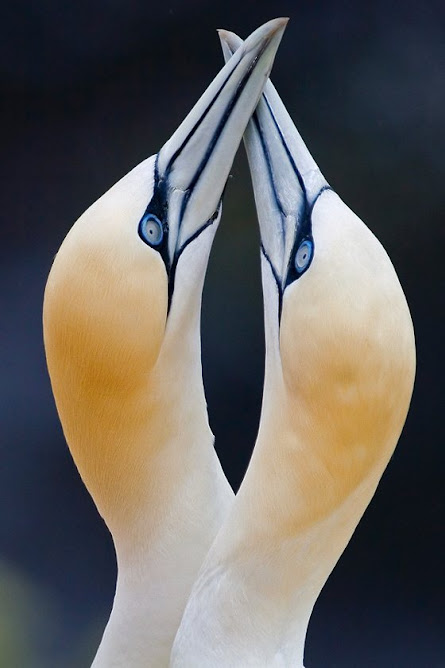Ordem Lagomorpha
Os lagomorfos ( latim científico : Lagomorpha ) constituem uma ordem de pequenos mamíferos herbívoros, que inclui os coelhos , lebres e ocotonídeos , na qual se incluem duas famílias: Leporidae ( coelhos e lebres ) e Ochotonidae ( pikas ).
Embora exteriormente os lagomorfos se assemelhem a roedores , há diferenças que justificam a sua inclusão numa ordem à parte. Elas são:
- quatro (em vez de dois) dentes incisivos na maxila
- o escroto do macho está em frente do pénis
- o pénis não tem ossos como nos roedores
Tal como os roedores, os lagomorfos têm dentes que crescem continuamente, necessitando portanto de actividade constante para evitar que fiquem grandes demais.
The lagomorphs are the members of the taxonomic order Lagomorpha , of which there are two families , the Leporidae ( hares and rabbits ), and the Ochotonidae ( pikas ). The name of the order is derived from the Greek lagos (λαγος, "hare") and morphē (μορφή, "form").
Though these mammals can resemble rodents (order Rodentia), and were classified as a superfamily in that order until the early twentieth century, they have since been considered a separate order. For a time it was common to consider the lagomorphs only distant relatives of the rodents, to whom they merely bore a superficial resemblance.
The earliest fossil lagomorphs, such as Eurymylus , come from eastern Asia, and date to the late Paleocene or early Eocene .The leporids first appear in the late Eocene, and rapidly spread throughout the northern hemisphere; they show a trend towards increasingly long hind limbs as the modern leaping gait developed. The pikas appear somewhat later, in the Oligocene of eastern Asia.
Characteristics
Lagomorphs differ from rodents in that:
- they have four incisors in the upper jaw (not two, as in the Rodentia);
- they are almost wholly herbivorous (unlike rodents, many of which will eat both meat and vegetation; the few recorded exceptions within the Lagomorpha occur among members of both Lepus and Ochotona , and involve the occasional foraging for carrion as a supplementary winter food source);
- the male's scrotum is in front of the penis (unlike rodents', which is behind); and
- the penis contains no bone ( baculum ), unlike in rodents.
However, they resemble rodents in that their teeth grow throughout their life, thus necessitating constant chewing to keep them from growing too long.
Espécie |
Imagem |
Distribuição europeia ( EMMA ) |
Diagnose das espécies - algumas características morfológicas |
Observações |
|
- coelho-bravo |
Oryctolagus cuniculus
Toca de coelho (from: http://www.naturephoto-cz.com/wild-rabbit,-burrow:oryctolagus-cuniculus-photo-10962.html ) |
http://www.european-mammals.org/php/showmap.php?latname=Oryctolagus+cuniculus&latname2= |
Skull (from: www.dundee.ac.uk/museum/zoology/skulls2.htm)
Skeleton (from: http://www.dundee.ac.uk/museum/zoology/skeletons.htm )
Skull (from: http://www.savalli.us/LSC370/Diversity/09.MammaliaImages/RabbitSkullL.jpg ) |
Two recognized subspecies occur on the Iberian Peninsula of Europe. Oryctolagus cuniculus algirus occupies the southwest peninsula (roughly Portugal and southern Spain). Some overlap of ranges exists with O. c. algirus and O. c. cuniculus , which occupies all points north and west of O. c. algirus (Biju-Duval et al. 1991). O. c. cuniculus is thought to be the descendant of early domestic rabbits released into the wild (Gibb 1990), and is now the subspecies that has been introduced throughout Europe and worldwide (Angulo 2004). O. c. algirus is also found in North Africa, Mediterranean and Atlantic islands (Branco et al . 2000). From: http://www.iucnredlist.org/apps/redlist/details/41291/0 |
|
lebre-ibérica |
Lepus granatensis
(from: http://olhares.aeiou.pt/lebre_iberica_lepus_granatensis_foto1270120.html ) |
http://www.european-mammals.org/php/showmap.php?latname=Lepus+granatensis&latname2= |
Lepus europaeus - skull (from: Van den Brink (1957): Die Säugetiere Europas .) |
Em Portugal e Espanha existe a espécie Lepus granatensis .
A taxonomia completa dos Lagomorpha da Península Ibérica pode ser visto no seguinte quadro (Origem: Fauna Ibérica )):
|
|
introduzido na ?Península Ibérica e ?Portugal
coelho-da-Flórida |
Sylvilagus floridanus |
http://www.european-mammals.org/php/showmap.php?latname=Sylvilagus+floridanus&latname2= |
From: Mark Herbert Williamson . Biological Invasions . Chapman & Hall. |

Sem comentários:
Enviar um comentário